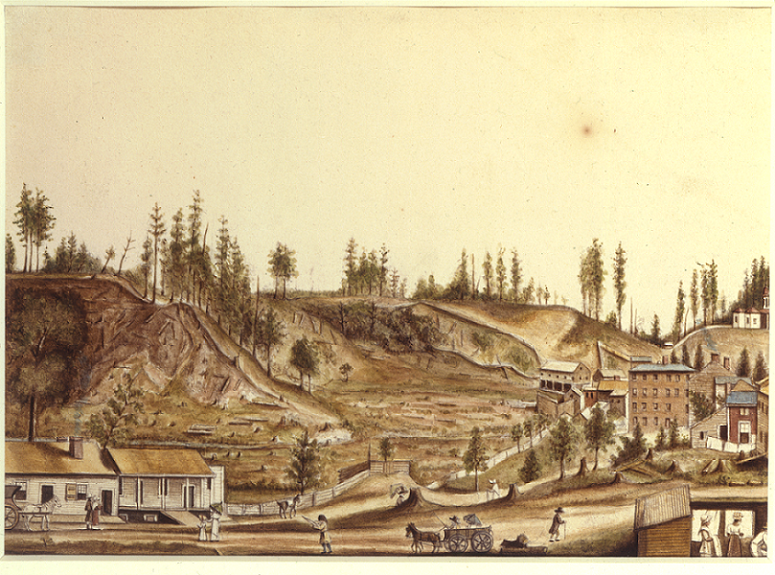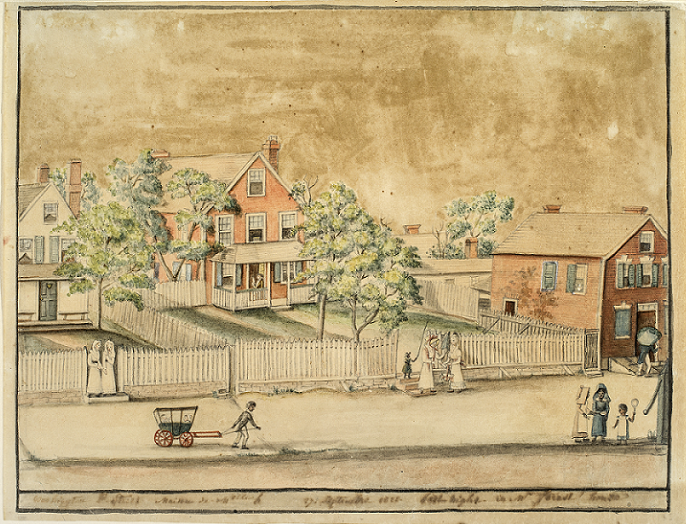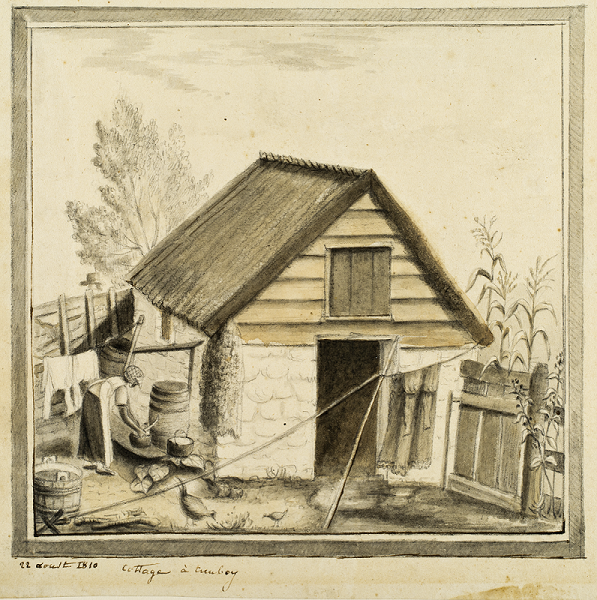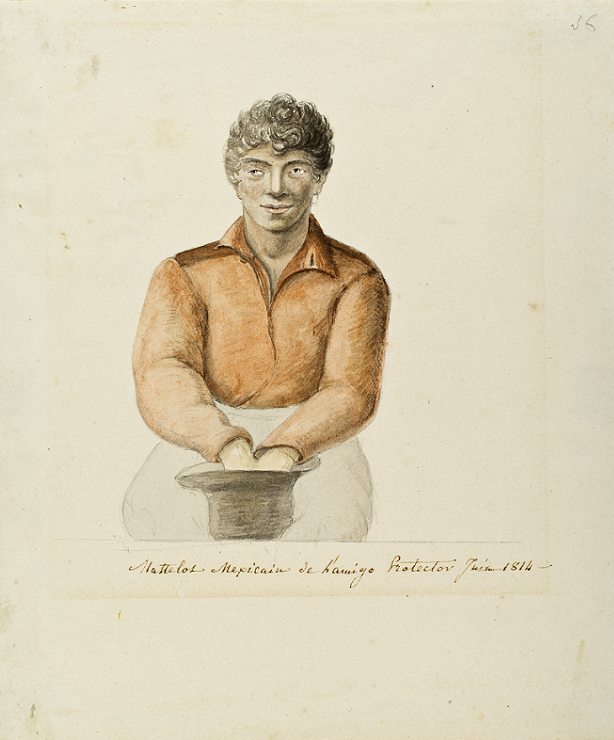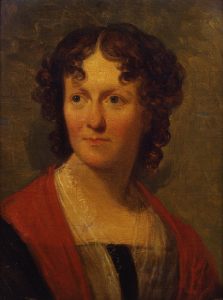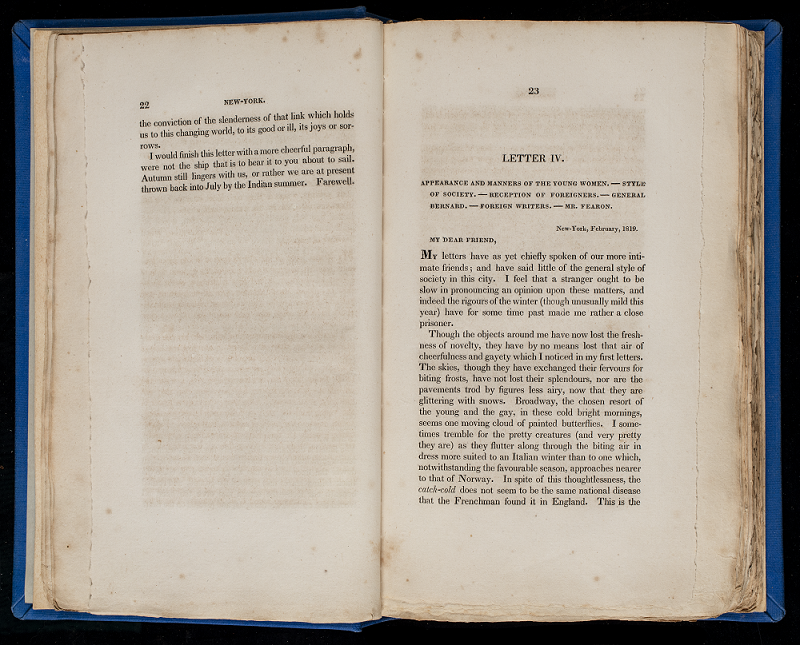Document Text |
Summary |
| I have observed, that it is usual for an American, in speaking of political matters, to say our president does so and so; we passed, or shall bring forward, such a bill in Congress; we took such and such measures with a view, etc. | I have noticed that Americans say things like “our president” and “we passed a bill.” |
| To speak in short from my present confined observations, I should say that it were impossible for a people to be more completely identified with their government, than are the Americans. | No other people in the world feel so involved in their government. |
| In considering it, they seem to feel, it is ours: We created it, and we support it; it exists for our protection and service; it lives by the breath of our mouths, and, while it answers the ends for which we decreed it, so long shall it stand, and nought shall prevail against it. | Americans feel like the government belongs to them because they created it, they support it, and it exists to protect and serve them. |
| If I may trust the report of all my American friends and acquaintances, confirmed by my own limited observation, there appear to be few remains of those party animosities which divided the community at the close of the revolutionary struggle, and the effects of which you found so unpleasing during your short residence in this country. | There does not seem to be much fighting between the political parties here. |
| It says much for the good sense of the people, and the wisdom of the institutions, that one generation should have outlived all the tempest of passion and bitterness of party, occasioned by the clash of interest and opinions is a great national revolution. | The fact that this new generation seems to have left all the political fights in the past is very impressive. |
Frances Wright, Views of society and manners in America, in a series of letters from that country to a friend in England, during the years 1818, 1819, and 1820 (New York: E. Bliss and E. White, 1821). New-York Historical Society Library.
Background
In the early years of the new nation, travelers arrived in the United States from all over the world. They were eager to see the world’s first democratic republic in action and curious about the customs and culture of the people who had built it. Many of these travelers documented their impressions of the United States in drawings and writings. Some only shared their travel records with friends and family. Others published their accounts so the public could learn more about the United States of America.
About the Image
These six watercolor paintings are by Anne Marguérite Joséphine Henriette Rouillé de Marigny, commonly called the Baroness Hyde de Neuville. The Baroness and her husband fled to the United States from France in 1807 after being exiled by Napoleon Bonaparte. They spent the next seven years traveling the country. The Baroness painted and drew any person or place that captured her imagination. Today, her collected works are an invaluable record of the diversity of people and places in the early United States.
The excerpt is from Frances Wright’s Views of Society and Manners in America, which was published with great success in 1821. Frances was a Scottish writer and philosopher who traveled throughout the United States with her sister from 1818–1820. Her writings illuminate the ways that American society was already distinguishing itself from its European predecessors.
Vocabulary
- exiled: Banished.
- Federal period: The early years of the United States, usually defined as 1790–1830.
- Napoleon Bonaparte: The military leader who crowned himself emperor of France after the French Revolution.
Discussion Questions
- What impression of the United States do you get from the Baroness Hyde de Neuville’s watercolor paintings?
- How do Americans relate to their government according to Frances Wright? Why do you think Frances found this interesting?
- Why is it useful to both see images and read firsthand accounts of life in early America?
Suggested Activities
- Include these sources alongside any lesson about Alexis de Tocqueville’s famous 1835 account of America, Democracy in America. In particular, ask students to consider how the country had already evolved between the time when the Baroness Hyde de Neuville and Frances Wright visited and Alexis’s more famous visit.
- After reading Frances Wright’s comments on American’s view of their government, ask students to read Growing Frustration and write a response from the perspective of the Virginia Freewoman. Would she agree with Frances’s observations? Why or why not?
- Capturing the spirit of a person or place through observational writing and drawing is very challenging. Analyze these pieces with your students to think about how both Frances and the Baroness made their observations come alive for their audience. Then ask the students to do their own observational writing or drawing of their classroom or school. What detail do they want to highlight? What larger point are they making with their piece?
- To learn more about what early American women did in their free time, see: American Cookery, Novel for a New Era, Silhouettes, and Quilting.
Themes
AMERICAN CULTURE; AMERICA IN THE WORLD


